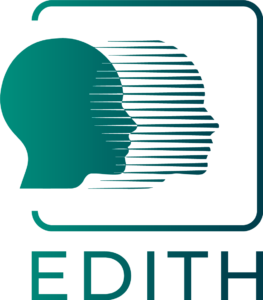WP7
Valorisation and exploitation in EU’s virtual human twin ecosystem
Lead: AIT Austrian Institute of Technology GMBH
Objectives
This work package aims to link VITAL with other stakeholders across Europe. This should ensure the sustainability of the developments within the project by meeting the needs of important players such as patients, clinicians, insurance systems, regulatory bodies, researchers, developers and companies.
1: Synergies with VPHi, international research & development activities
This task will help to ensure EU networking, specifically the collaborations with EU stakeholders on the level of international research and development activities. Special focus will be on networking and coordinating activities with the Coordination and Support Action EDITH (European Virtual Human Twin) as well as the VPH institute (Virtual Physiological Human). Furthermore, close contact to the projects funded under the same call as VITAL is envisaged. Networking with healthcare specialists and R&D partners from industry will be established to understand their needs and to find synergies for exploitation.


https://www.vph-institute.org/
2: Feed the VPHi/EDITH repository
Publicly shareable data, models and code will be uploaded onto EDITHs/VPHi repository. The necessary metadata and wrapper code will be generated to ensure interpretability, connectivity and interoperability of data and models within VPH’s virtual human twin framework.
3: Perspectives of healthcare insurance organisations on virtual human twins
Healthcare insurance companies will be engaged in interviews to investigate the orientations, preferences and possible resistances to the use of wearable technology and virtual human twins. Future cost coverage by social insurance for such developments will be explored. A stakeholder working group will be created with the aim of identifying trends and comparing them to project results and their exploitation potential.
4: Regulatory aspects
A detailed analysis of applicable norms and requirements within the EU legislation framework will be performed. More specifically, qualification (Guidance on Qualification and Classification of Software in Regulation (EU) 2017/745 – MDR) and risk-based classification (MDR rule 11, annex VIII) will be applied. Besides MDR, other applicable standards useful to provide evidence of conformity will be taken into consideration. The knowledge regarding regulatory aspects will be evaluated within the consortium. Based on the detailed gap analysis, training for the consortium members will be organised.
https://eur-lex.europa.eu/legal-content/EN/TXT/PDF/?uri=CELEX:32017R0745
5: Innovation and IPR management
An IP protection plan and actions will be defined. Identification of foreground IP and its protection will safeguard future exploitation of project results. Project internal innovation workshops will be held to actively identify inventions from the project activities. An IP directory will be compiled and updated, including information on possibilities or restrictions for dissemination and exploitation.
6: Sustainability and Exploitation plan
Individual and joint exploitation pathways will be defined. The translation of research results into innovations will be ensured by monitoring the developments within and outside VITAL as well as current market trends. A value chain gap analysis will be performed to identify needed technical and non-technical actions to prepare project’s later transfer into a marketable product, including safety, regulation, and standardisation aspects.